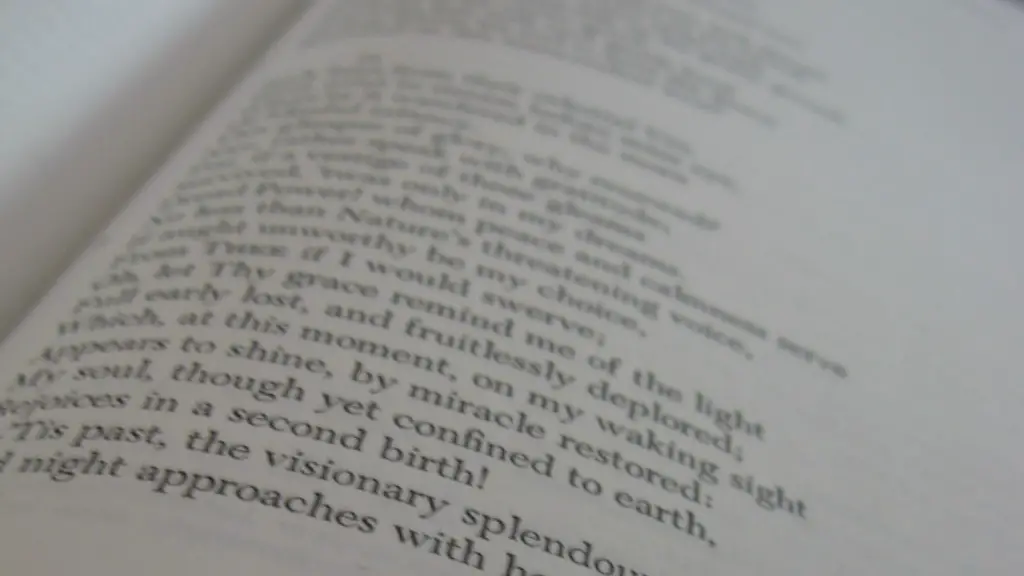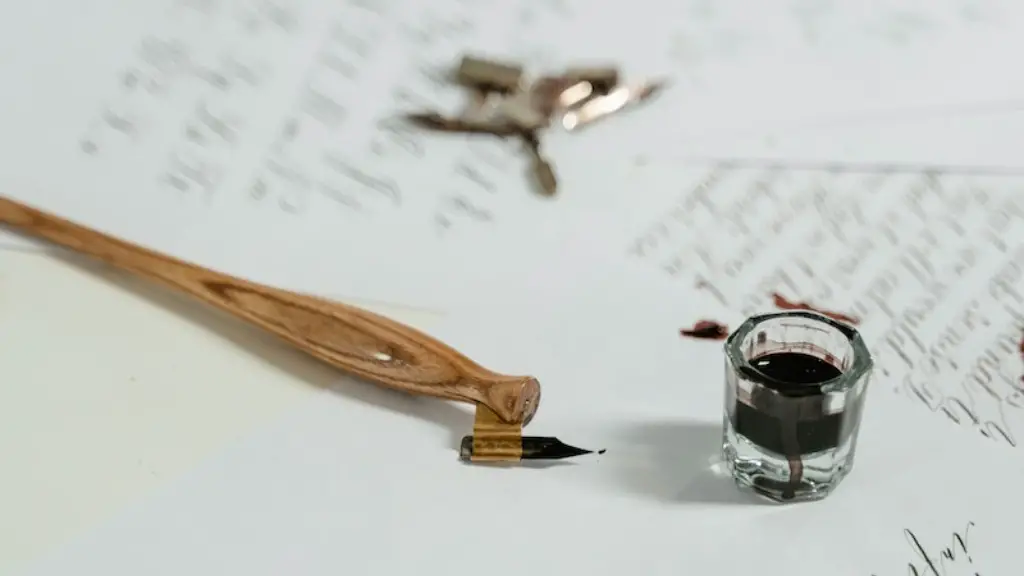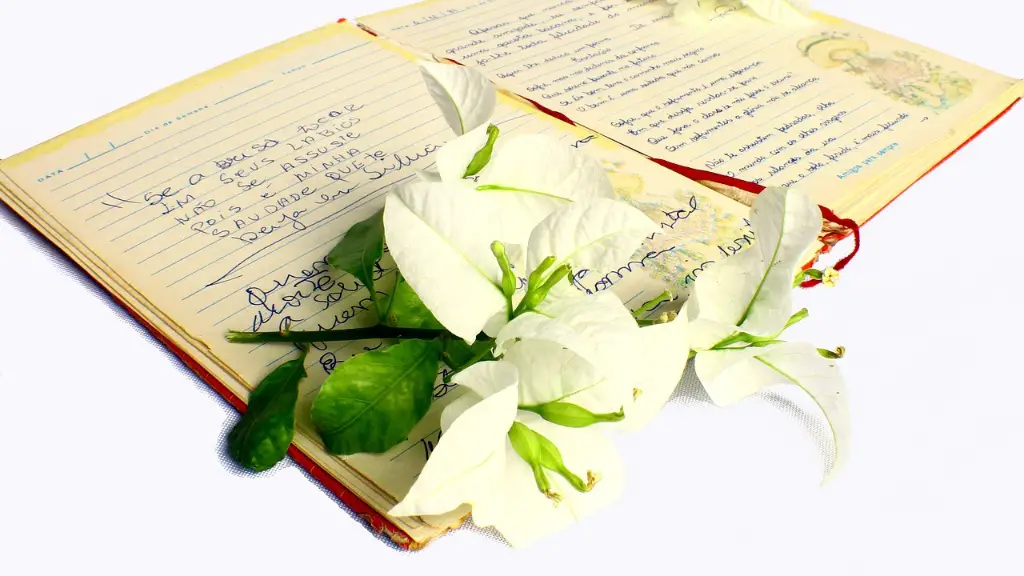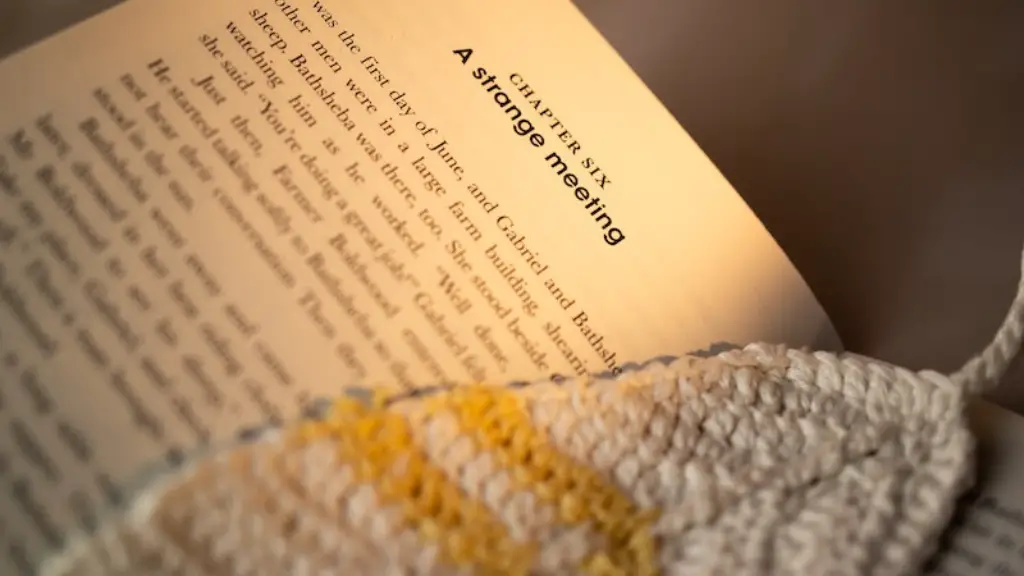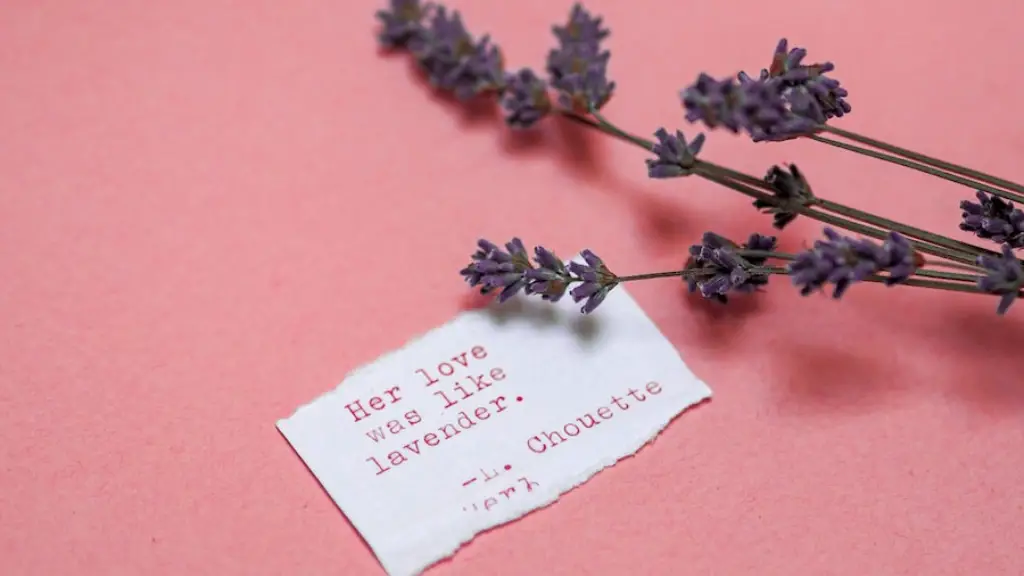Most poems use specific rhyme patterns to achieve certain aesthetic effects. End rhymes are used particularly often in poems, and they can bring a certain flow or music to the work. In this article, we’ll look at what end rhymes in poetry are and how they’re used to create a coherent poem.
End rhymes are defined as words that share similar sounds at the end of their lines. Rhyme is an important part of poetry, and end rhymes are used to tie lines together in a more compelling way. The use of end rhymes can help create a sense of unity through the lines of the poem, particularly when the same word is repeated in the last line of successive stanzas. Additionally, end rhymes can also be used to add structure and form to a poem, as rhymes often come in sets of two or more words.
There are many types of end rhymes in poetry, including full rhymes, partial rhymes, near rhymes and slant rhymes. Full rhymes involve two words with the exact same ending, such as “cat” and “hat”. Partial rhymes involve words with similar endings but not exact matches, such as “love” and “prove”. Near rhymes are words with similar sounds but different spellings, such as “men” and “move”. Slant rhymes involve words with similar sounds but not necessarily similar spellings, such as “light” and “site”.
The use of end rhymes in poetry can be used to create a certain mood or atmosphere in the poem. For example, full rhymes can create a sing-song, lighthearted tone, while partial rhymes can create a more serious, poetic atmosphere. Additionally, end rhymes can be used to create a sense of rhythm and flow. By placing end rhymes at the end of each line or stanza, the poem will feel more unified and cohesive. This can be a particularly powerful tool when writing a longer poem, as it can help keep the reader’s attention throughout.
End rhymes are also used to create a certain emphasis in the poem. By using the same word to end consecutive lines, the poet can create a feeling of repetition and continuity that can be used to draw attention to certain words or ideas. Additionally, end rhymes can be used to create a sense of rhythm in the poem, as words that share a similar sound will feel more connected. This can add a certain musicality to the poem that helps draw the reader in.
Overall, end rhymes are an important part of poetry, and they can help create a sense of unity and flow in the work. They can also be used to create a certain atmosphere or emphasize certain words or ideas. End rhymes can be full rhymes, partial rhymes, near rhymes or slant rhymes, and they can be used to create a sense of rhythm and emphasis in the poem. As such, it’s important for any poet to understand how to use end rhymes effectively in their work.
Types of End Rhymes in Poetry
End rhymes can be full rhymes, partial rhymes, near rhymes, or slant rhymes. Full rhymes involve two words with the exact same ending, such as “cat” and “hat”. Partial rhymes involve words with similar endings but not exact matches, such as “love” and “prove”. Near rhymes are words with similar sounds but different spellings, such as “men” and “move”. Slant rhymes involve words with similar sounds but not necessarily similar spellings, such as “light” and “site”.
Using different types of end rhymes can help create specific effects. For example, using more full rhymes and near rhymes can create a vivid, playful atmosphere, while using partial rhymes and slant rhymes can create a more serious, poetic tone. Additionally, some poets might pair different types of end rhymes together to create more complex effects.
It’s important to note that there is no one “right” way to use end rhymes. Different poets can experiment with different types of rhymes to create their own unique styles. Ultimately, it’s up to the poet to decide which type of rhyme best suits their poem.
The Impact of End Rhyme in Poetry
End rhymes can have a major impact on the way a poem is perceived by the reader. As mentioned above, end rhymes can be used to create a certain mood or atmosphere in the poem. Additionally, they can also be used to add emphasis to certain words or ideas, or to create a feeling of rhythm and flow in the poem.
It’s also important to consider the impact of rhyme on the overall structure of the poem. End rhymes can help to create a sense of unity and cohesion in the poem, as the same word or similar words are repeated in each successive line or stanza. This can help to keep the reader’s attention and make the poem easier to read.
Finally, end rhymes can also be used to create a certain musicality in the poem. By using words with similar sounds together, the poem can take on a more melodic quality. This can be particularly effective when used in longer poems, as it can help to keep the reader’s attention throughout.
Examples of End Rhyme in Poetry
End rhymes can be found in the work of many poets, both classical and contemporary. For example, the famous poem “The Road Not Taken” by Robert Frost uses near rhymes throughout: “Oh, I kept the first for another day! / Yet knowing how way leads on to way, / I doubted if I should ever come back.” Here, the near rhymes of “day”, “way” and “back” help to create a sense of rhythm and flow that keeps the reader’s attention throughout the poem.
Additionally, the poem “If” by Rudyard Kipling uses a variety of end rhymes, including full rhymes, partial rhymes and near rhymes: “If you can fill the unforgiving minute / With sixty seconds’ worth of distance run, / Yours is the Earth and everything that’s in it.” Here, the end rhymes of “minute” and “run,” as well as the partial rhymes of “in it” and “minute,” help to create a sense of emphasis and create a more vivid atmosphere.
Overall, end rhymes can be a powerful tool when used correctly. Experienced poets can use end rhymes to create a sense of atmosphere, cohesion and musicality in their work. By understanding the different types of end rhymes and their impact on a poem, a poet can create a work that is sure to captivate a reader.
Techniques for Writing End Rhyme Poems
Writing a poem that uses end rhymes can be a daunting task, but there are some techniques that can help. For example, it can be helpful to brainstorm ideas beforehand, as this can help to give structure and coherence to the poem. Additionally, it can be helpful to create an outline of each stanza before writing the poem, so that the poet has a plan for where the rhyme scheme should go.
It can also be helpful to read other poems that use end rhymes. By reading works by experienced poets, a poet can get inspiration for their own work and understand how to use end rhymes effectively. Additionally, it can be helpful to experiment with different types of rhymes – by playing around with different rhyme schemes, a poet can create their own unique style.
Finally, it can be helpful to take a break from the poem and come back to it with a fresh perspective. When revising a poem, it can be beneficial to get feedback from someone else who can offer a new point of view. This can help the poet to identify any mistakes or potential improvements that might need to be made.
Ways to Improve End Rhyme Poems
When revising end rhyme poems, it can be useful to ask some questions to determine what can be improved. For example, is the poem too complicated or too simple? Is the poem’s rhythm too monotonous or too staccato? Are the rhymes too predictable or too unusual? Is the poem boring or too abstract? Are the rhymes of the same length or varying lengths?
By asking these questions, a poet can determine any areas that need improvement. Additionally, it can be helpful to read the poem out loud, as this can help to identify any mistakes or flaws that are not immediately apparent. Furthermore, it can be useful to experiment with different types of rhymes and meter, as this can help to create a more unique poem.
Overall, there are many techniques that can be used to improve end rhyme poems. By understanding the principles of end rhymes and how they affect the poem, a poet can create a work that is sure to captivate the reader. Additionally, by reading the poem out loud and experimenting with different types of rhymes, a poet can create a more complex and interesting poem.
